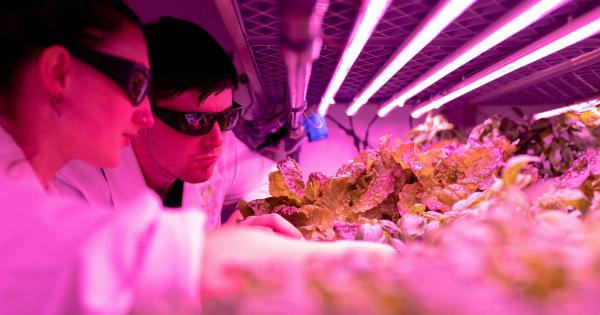When TB plays hide and seek, it becomes a life-threatening game for millions of people around the globe. Tuberculosis, commonly known as TB, is one of the world’s deadliest infectious diseases.
This article aims to shed light on the various aspects of TB, including its causes, symptoms, diagnosis, treatment, prevention, and the global efforts being made to combat this hidden killer.
What is Tuberculosis?
Tuberculosis is an airborne infectious disease caused by the bacterium Mycobacterium tuberculosis. It primarily affects the lungs but can also target other parts of the body, such as the kidneys, spine, and brain.
TB spreads from person to person through the air when an infected individual coughs, sneezes, or talks. While anyone can contract TB, it is more prevalent among individuals with weakened immune systems, malnutrition, or those living in overcrowded conditions.
The Silent Subversion: Latent TB Infection
When TB bacteria enter the body, the immune system usually forms a protective barrier, preventing the bacteria from multiplying. In such cases, individuals have what is referred to as a latent TB infection (LTBI).
People with LTBI do not exhibit any symptoms and are not contagious, which often makes it difficult to identify and diagnose them. However, if left untreated, the infection can progress to active TB, triggering the manifestation of severe symptoms.
Unveiling the Symptoms
Active TB presents a wide range of symptoms, although it primarily affects the lungs. The most common symptoms include persistent cough, chest pain, coughing up blood, fatigue, weight loss, fever, night sweats, and loss of appetite.
As these symptoms are non-specific and resemble those of other respiratory illnesses, TB can often go undetected or misdiagnosed, leading to delayed treatment.
Diagnosing the Hidden Menace
Accurate and timely diagnosis is crucial in the management of TB. Several diagnostic tools and tests are available to detect TB infection.
The Mantoux tuberculin skin test (TST) and the interferon-gamma release assays (IGRAs) are commonly used to test for TB infection. Chest X-rays and sputum tests are also employed to detect active TB. Additionally, advancements in molecular diagnostics, such as the GeneXpert MTB/RIF assay, have revolutionized TB diagnosis by rapidly identifying drug-resistant strains of TB.
The Race Against Drug Resistance
TB treatment involves a combination of antibiotics that must be taken for several months to ensure complete eradication of the bacteria.
The emergence of drug-resistant TB strains, such as multidrug-resistant TB (MDR-TB) and extensively drug-resistant TB (XDR-TB), has posed a major global challenge. These drug-resistant strains are much harder to treat and require more prolonged and expensive treatment regimens. Adequate funding, research, and innovative drug development are essential to combat the growing threat of drug resistance.
Fighting the Hidden Killer: Global Efforts
Tuberculosis is a significant global health concern, affecting people from all walks of life. Efforts to combat TB have been intensified at both national and international levels.
The World Health Organization (WHO) has implemented the End TB Strategy, setting ambitious targets to end the global TB epidemic by 2030, including reducing TB deaths by 95% and cutting new cases by 90%. Additionally, various organizations, governments, researchers, and pharmaceutical companies are collaborating to develop new and improved diagnostics, drugs, and vaccines to tackle TB more effectively.
Prevention is Better Than Cure
Preventing the transmission of tuberculosis is crucial in reducing the burden of the disease.
Simple measures, such as promoting good respiratory hygiene, ensuring good ventilation in crowded spaces, and early detection and treatment of active TB cases, can help prevent the spread of the infection. Vaccination with the Bacillus Calmette-Guérin (BCG) vaccine is also commonly used in high TB burden countries to protect infants and young children from severe forms of TB.
The Socioeconomic Impact of TB
Tuberculosis not only takes a toll on the health of individuals but also has significant socioeconomic consequences.
TB affects individuals during their most productive years, leading to increased absenteeism from work, decreased productivity, and economic losses. The burden is often higher in low- and middle-income countries where resources for healthcare are limited. Addressing the socioeconomic impact of TB is essential for sustainable development and reducing poverty globally.
The Power of Awareness
Education and awareness play a crucial role in combating TB.
By spreading knowledge about the disease, its symptoms, modes of transmission, and prevention methods, we can encourage early diagnosis, promote treatment adherence, and reduce the stigma associated with TB. Community engagement and involvement are vital in ensuring that healthcare systems are effective in detecting, treating, and preventing TB.
Conclusion
Tuberculosis continues to claim countless lives worldwide due to its ability to hide in the shadows, making early detection and treatment challenging.
However, through global collaboration, research advancements, and increased awareness, we have the potential to overcome this hidden killer. By investing in preventive measures, improving diagnostics, ensuring access to quality treatment, and addressing social determinants of health, we can pave the way towards a world free from the burden of tuberculosis.































